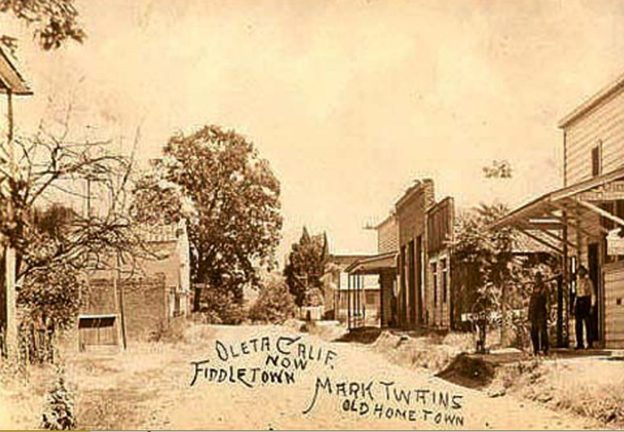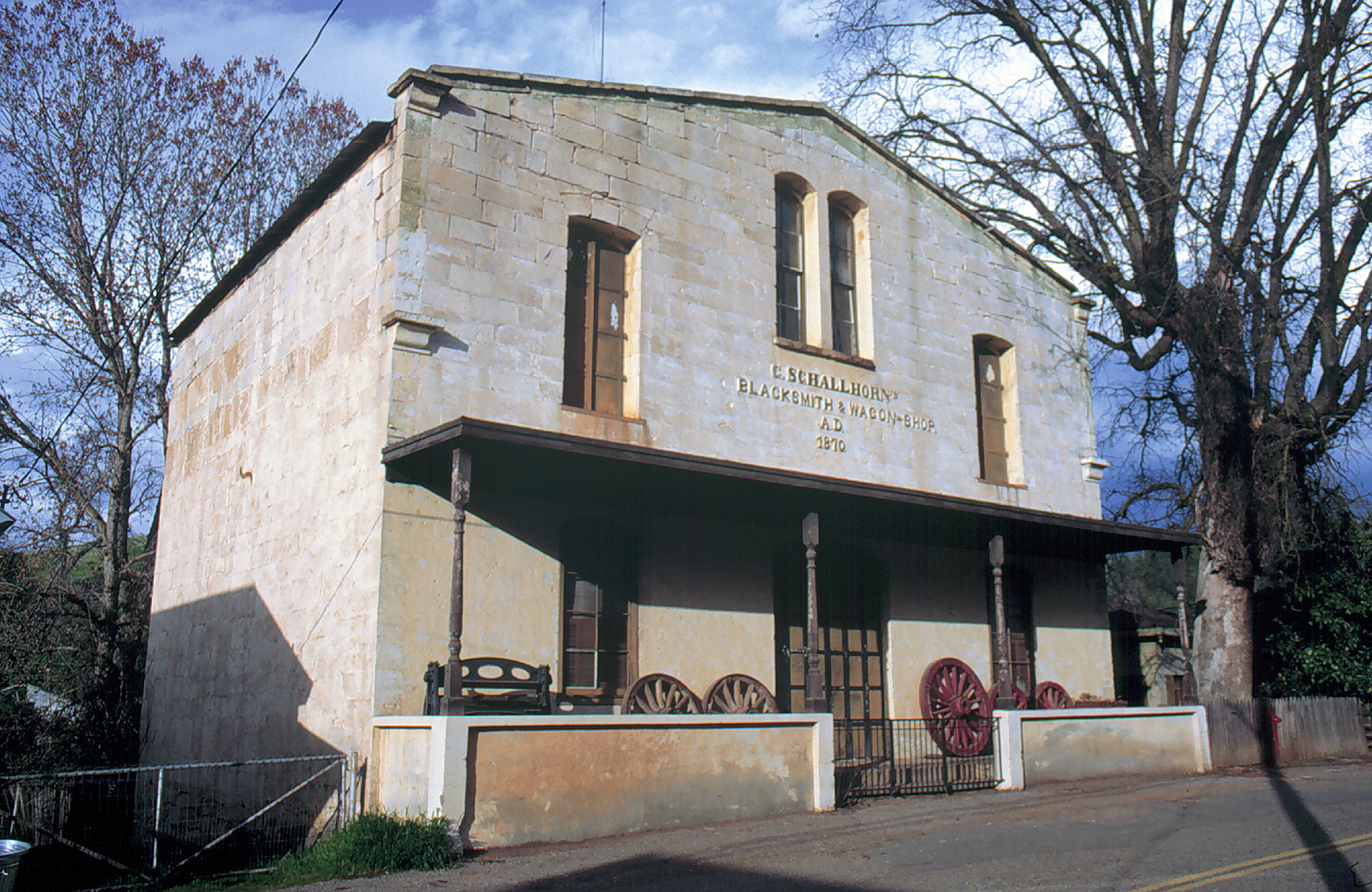It’s probably safe to say that some early settler in Fiddletown was partial to playing the fiddle. The town’s early years proved uneventful, its growth slow; the number of houses could be counted on one’s fingers. All this changed in 1852 when several rich discoveries were made in the region, resulting in new camps such as American Flat, French Flat, Loafer Flat, and Lone Hill among others. With the emergence of these camps, Fiddletown became a trading center for the region, and combined with the continued workings of the placers, the town boomed. Tents, brush ramadas, and substantial buildings of wood, brick, and stone soon covered the landscape as the population swelled, ultimately reaching several thousand people during the mid-1850s.
Unlike the neighboring lowland camps, Fiddletown lacked the deep quartz mines which would have sustained it when the placers played out. So when the gold began to go away, so did the people. The town never really gave up the ghost; however, as it remained somewhat of a supply point for the region and home to many of its original settlers, Fiddletown didn’t disappear, but it died in early February of 1878.
Due to the actions of Judge Columbus Allen Purinton, a petition was circulated, signed, and submitted to the state legislature requesting that the name of the town be changed to “Oleta”. Why? Apparently, Judge Purinton, who was never a judge in Amador county, was embarrassed to write “Fiddletown” as his place of residence, after becoming know in San Francisco and Sacramento as “the man from Fiddletown.” The bill sassed quickly and soon gathered the governor’s signature to make it official. Fiddletown was dead. Long live Oleta. But as you may have noticed, the town is once again known as Fiddletown.
In 1932, during the eighty-third-anniversary celebration of the founding of Fiddletown (Oleta), visitors and residents alike chanced to wonder, why the name was ever changed. Fiddletown seemed much more historic and right. By this time it didn’t take an act of legislature to change the name of an unincorporated town. All you had to do was petition the postmaster to change the name of the town’s post office. So once again a petition circulated in Fiddletown (Oleta), upon which sixty-four residents signed their names. Copies were sent to the U.S. Postal Department and the Postmaster-General, and in early June of 1932, the news came to town that on July 1, 1932, Oleta would die. Long live Fiddletown!



